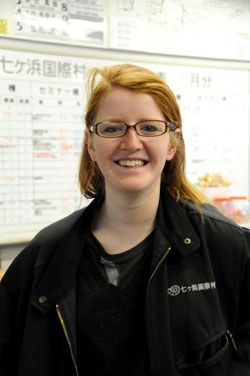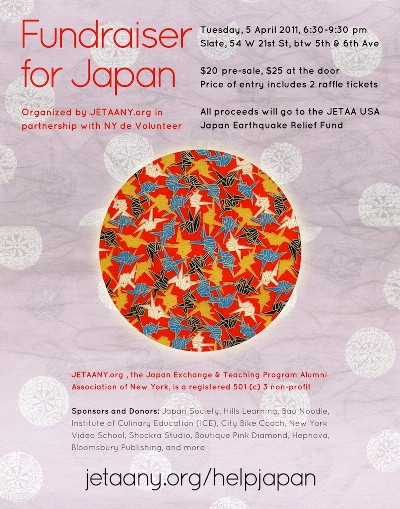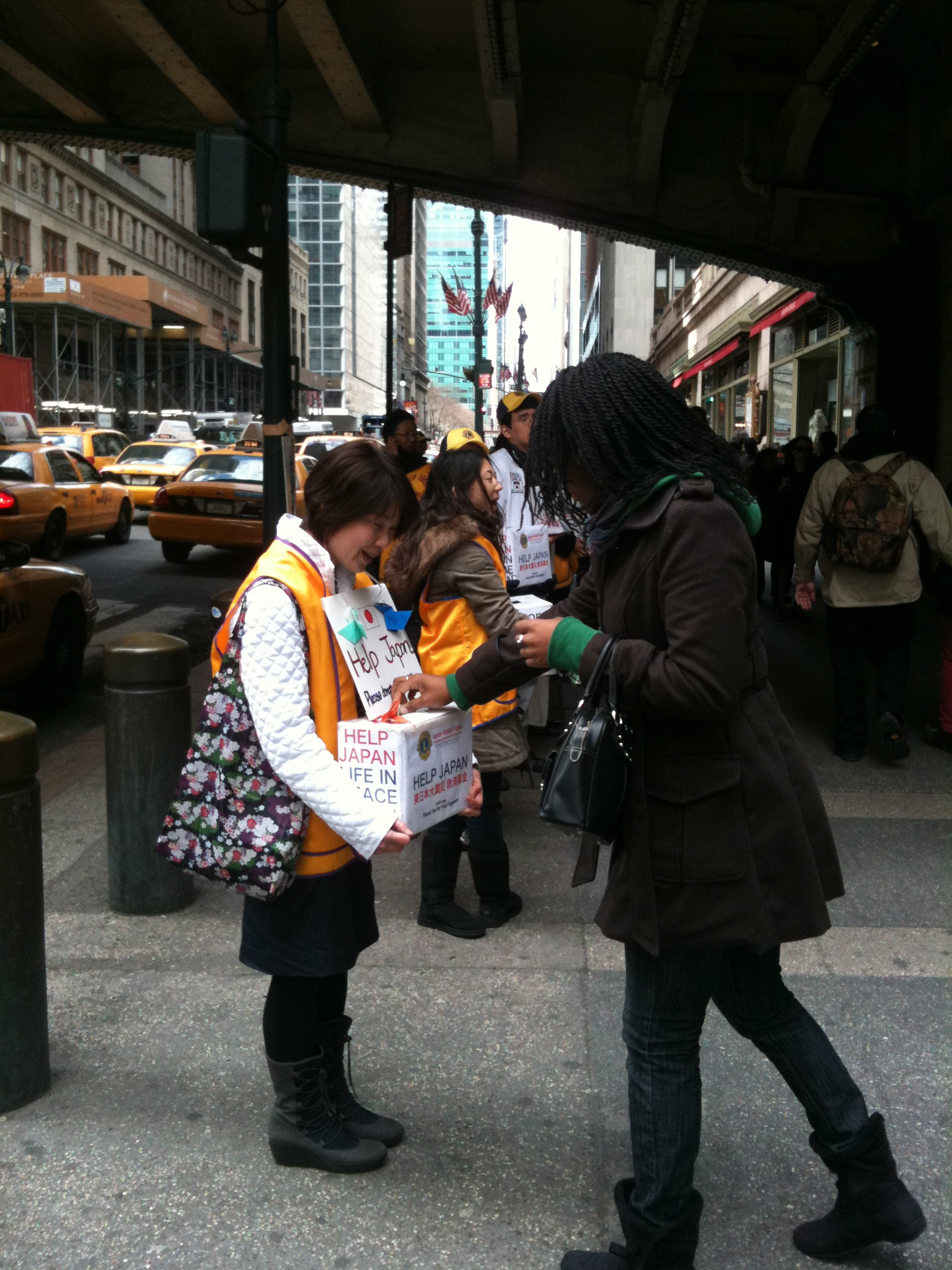The Laurasian Institution Seeking Local Coordinators for HS Exchange Program (multiple states in the US)
via Carleen Ben (Oita-ken 2006-2008) Carleen currently works as a Program Associate at The Laurasian Institution, a non-profit organization promoting international exchange programs between US – China, Japan, and Korea.
Contribute to greater international understanding by offering exchange students the chance to realize their dream of attending an American high school for an academic year. Exchange students learn through experience about living in America while their host families and schools benefit by learning first hand about the customs and perspectives of the student in their care.
Join the staff of The Laurasian Institution (TLI) in creating the very best exchange environment for both students and families. Take pride in working with colleagues who share your commitment to quality exchange. Benefit from the flexibility of setting your own schedules and time commitments.
Selection of quality host schools and host families is key to achieving the program’s educational, cross-cultural, and public diplomacy goals, including helping the exchange student achieve familiarity with life in the U.S. and better understand American culture. Through your participation as a Local Coordinator you will be at the very heart of the program and a true ambassador for international understanding.
2011 National AJET Awards Nominations!
Via AJET:
Every year National AJET recognises some of the outstanding contributions JET participants have made to their local communities. If you know an individual or prefectural AJET chapter that fits this profile, please nominate them for one of the categories listed. Self-nomination is encouraged, so don’t be shy – go for it!
For more info about how to nominate somebody go here:
http://ajet.net/lang/en/2011/04/18/2011-national-ajet-awards-nominations/
Posted by Sam Frank, an ALT who taught English in Hiraizumi-Cho, Iwate Prefecture from 2002-2004 and worked in Shirahama-cho, Wakayama Prefecture as a JET from 2004-2006. He currently manages the New York Division of UnRated Magazine and works as a Project Manager/Web Producer at Arrow Root Media.
Japan Volunteers
Via the Japan Earthquake Disaster Relief Idea Exchange Facebook page, which I believe was originally set up by JET alum Emily Duncan:
Here’s a link to a blog/website called Japan Volunteers (japanvolunteers.wordpress.com) that seems to have good info and perspectives on volunteering in various ways in connection with everything going on in Japan. Here’s an excerpt:
Your services are needed
I have put out a call to several disaster relief NGOs I know to see what their needs are. Many groups are asking for volunteers in limited numbers.
I know many of you want to volunteer but money (see donation pages) and daily use items (see the materials page) are still needed. Please do not just get in a car and drive north.
I have recently heard that in some places in Tohoku there are too many people showing up clogging roads and using up limited resourced. We all can do something to help but we do not all need to go up there to make a difference.
I have many emails every day from people who want to do something – people from all over the world who want to come to Japan. I am sorry but you will not find that answer here on this site. Right now is not the time to just hop on a plane and come to help with the relief efforts. When the rebuilding starts 1000s of volunteers will be needed. that should take anywhere from 3 to 10 years.
AJET Cares: Care packages for JETs in affected areas
Via AJET.net:
AJET is trying to coordinate sending care packages to JETs in areas affected by the earthquake. If you, a group of friends, or your prefectural AJET chapter would like to send a care package to a JET who needs it, please see this form for more information and to sign-up: http://tinyurl.com/3v9o25o.
Questions? Contact us at care@ajet.net. Show another JET that you care~
Here’s the full post from the AJET website:
Dear JET Participants,
As you know, many JETs live in areas that were heavily affected by the earthquake and tsunami. Though relief agencies have been making headway, some regions are still without regular access to power, heat, or supplies. NAJET has provided information on volunteering and donating through some of these organizations, but now we’d like to focus on helping out within our own community, JET to JET.
If you have been looking for a way to get involved, whether as a local AJET chapter, as a group, or as an individual, here is an opportunity to help on a very personal level. We will be putting together a database of request for assistance and offer to help from across the nation. JETs in affected areas will be paired with JETs from areas that are able to provide support. Our hope is that this will strengthen the bonds within our community, while providing personal, timely aid.
We will try to arrange recipients and senders based on the specific requests and information provided by both sides. JETs who are able to send supplies should click on the link at the bottom of the page and fill out the “Application to Send Assistance” form. JETs who live in areas affected by disaster should fill out and submit the “Application to Receive Assistance” form at the corresponding link below. JETs living in affected areas may also include requests for items in need at a specific evacuation shelter.
Once NAJET pairs up applicants and contact is established on both sides, we hope that the support relationship will grow from there, and that JETs will be able to communicate between one another. However, if you need any advice or support, please don’t hesitate to contact us. The list of respondents will be continuously updated, and the more people can help out, the better. We strongly encourage senders to work together with their prefecture’s AJET chapter!
Guidelines for what to include, box size limits, etc. are included on the application forms.
We will be matching up JETs as we get more information, so it may take some time before you have a contact. We ask for your patience, and in the meantime, encourage you to get involved in your local communities by raising money or gathering donations. For a list of ways that you can help out, please browse our website.
Click here to SEND a care package
Click here to REQUEST a care package
For questions, comments, feedback, please contact: care@ajet.net
*************
Here’s an April 7 Japan Times article about Marti McElreath (CIR Miyagi-ken, Shichigahama-shi).
JET post best, not ‘pityfest’
American helps, refuses to leave beloved, battered beach locale
Thursday, April 7, 2011
SHICHIGAHAMA, Miyagi Pref. — There is a picture folder in Marti McElreath’s Facebook account that chronicles her time in Shichigahama, a town located on a small peninsula in Miyagi Prefecture less than an hour’s drive from Sendai and where she has been working since last summer under the Japan Exchange and Teaching Program.
Her comment on the folder reads: “I have the best JET placement in Japan,” a view McElreath hasn’t changed despite the massive earthquake and tsunami that brutally transformed the once peaceful beach community she has come to love.
“I mean, it’s heartbreaking and hard to see what happened, but people are laughing and kids are playing and life is going on. Even after all that’s happened, I still believe it, I believe that I have the best JET placement in Japan,” she said.
While radiation fears from the Fukushima No. 1 nuclear power plant have led many foreigners in the region to flee, McElreath, who said the town lies on the cusp of the 80-km evacuation zone recommended by the U.S. government, has remained firm in her conviction to stay and do what she can to help the community.
“I’ve only been here for seven or eight months, but I really do love Shichigahama. The people here have been really amazing to me, and they’ve done so much to help me — I couldn’t imagine just leaving,” said McElreath, 23, from Westborough, Mass.
The earthquake and tsunami that hit the small town of 20,000 claimed 56 lives, and 18 people remain missing. Nearly 1,000 people were still living in the town’s six evacuation centers as of Tuesday, and many houses in the coastal area were swept away or damaged.
The facility McElreath works for, Kokusaimura, or International Village, is being used as a temporary shelter, providing food and a place to sleep for around 300 people, and McElreath spends her days helping out evacuees as the only foreigner among the staff.
According to the International Affairs Division of the Miyagi Prefectural Government, out of the 70 JETs in Miyagi — excluding those in Sendai — 36 have either returned to their homeland or evacuated from the prefecture following the earthquake and subsequent nuclear disaster.
A municipal representative from Sendai said out of the 70 JET assistant-language teachers working in the city, 50 remained, and the rest planned to return before schools reopen Monday.
When the magnitude 9.0 earthquake hit at 2:46 p.m. on March 11, McElreath was at her office at Kokusaimura, going about her usual business.
As a coordinator for international relations, McElreath, fluent in Japanese after studying as an exchange student in Kobe during high school and then at Tohoku University during her senior year in college, was responsible for organizing various community events the facility hosted, as well as giving English-language and culture classes to local residents.
Without warning, the earthquake cut off the lifelines at the facility, and while sirens blared out tsunami warnings, people began evacuating to Kokusaimura, which sits on a hill.
McElreath said no one at the facility at that point was aware of the scale of the tsunami that was about to crash into the peninsula. By the time emergency electric generators were able to re-connect television sets, evacuees were confronted with horrific images of the disaster.
“I think it was around that point that we realized that we were going to be here for a while,” she recalled.
Then at around 6 or 7 p.m. a huge explosion shook the facility and its residents as the JX Nippon Oil & Energy Corp.’s Sendai oil refinery, located a few kilometers from Shichigahama, went up in flames.
“The entire sky went red, and everyone gathered around the windows and looked outside and it was, like, an inferno,” McElreath said, adding the smoke from the refinery lasted two or three days.
While McElreath was able to notify a prefectural adviser of the JET program of her safety immediately after the earthquake, cell phone reception quickly died.
It was not until the third day after the earthquake that she rode her bicycle 6 or 7 km toward Sendai and her cell phone finally re-connected, allowing her to contact family and friends to let them know she was safe.
McElreath said that as the Fukushima nuclear disaster unfolded, many foreigners she knew in the region, including non-JETs and those from other nations, were contacted by their respective embassies and advised to evacuate.
“There are noticeably less foreigners, there is almost no one left that you can tell by just walking around,” McElreath said, adding she did not feel threatened by the radioactivity leaking in Fukushima.
“I decided that I would rather stay here as long as possible and keep on monitoring the situation,” she said, adding that while her parents are concerned for her safety, they understand her desire to remain and help the community.
While electricity returned about a week after the earthquake, and propane could be used, water remained undrinkable and was only restored Tuesday in some areas of town. McElreath said that while Kokusaimura was well stocked with food and drinking water, evacuees missed taking baths.
Meanwhile, McElreath said Plymouth, Mass., Shichigahama’s sister city, has been making fundraising efforts, already gathering $80,000 to be used in the town’s rebuilding. Teams from as far afield as Turkey have arrived on search and rescue missions, and various volunteers, including many celebrities, make the rounds to Kokusaimura to drop off goods and cheer up the evacuees.
McElreath has recontracted with JET until July 2012, and she is determined to stay and work — if the situation allows her to — for the entire duration.
“I’d like to let everyone know that the people here are positive and we don’t want this to become a pityfest.
“We are doing our best.”
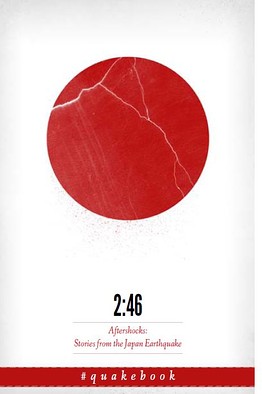 Fukushima City JET Brent Stirling recently put out word to JETAA chapters about Quakebook, “a book of stories, art and photographs that reflected first person accounts of the disaster” which will soon be available on Amazon.com with all proceeds going to benefit the Japan Red Cross. Brent contributed his own story and has also offered to help with marketing and spreading the word. Below Brent provides some insight into the unique process that led to the creation of of the project as well as his own involvement.
Fukushima City JET Brent Stirling recently put out word to JETAA chapters about Quakebook, “a book of stories, art and photographs that reflected first person accounts of the disaster” which will soon be available on Amazon.com with all proceeds going to benefit the Japan Red Cross. Brent contributed his own story and has also offered to help with marketing and spreading the word. Below Brent provides some insight into the unique process that led to the creation of of the project as well as his own involvement.
I lived in Fukushima City from August 2006 to August 2010 and worked as an ALT there. The recent earthquake, tsunami and nuclear crisis in Tohoku has had me glued to my computer since it began, as has probably been the case with all JET Alumni. Keeping in contact with my friends in Fukushima-ken through Facebook and Twitter, I felt helpless as far as how to help and what to do.
With limited access to news in the first days after the quake, I compiled information from friend’s Facebook status updates, Twitter and a variety of news sources. I sent these updates via Facebook to my friends who didn’t have the time to comb through the news in order to get an accurate picture of what was going on. Updates included news about transportation, gas, areas with running water, wind directions, reactor conditions and radiation levels. Facebook became a source of news for everyone in the prefecture. The current and former Fukushima JET community along with Japanese people worked together in order to get a clear picture of what was going on in Fukushima.
A week after the earthquake, I was sent a link to a blog asking for contributions about the earthquake. The blogger, OurManInAbiko, hoped to create a book of stories, art and photographs that reflected first person accounts of the disaster. He vowed to edit all the submissions and donate all of the proceeds to the Japanese Red Cross. Looking to help anyway I could, I put in a submission about my experience in Canada throughout the ordeal and how proud the JETs and Japanese community had made me throughout the crisis. My submission discusses sensationalism in the media and how the JET community worked together using social media to overcome adversity and share accurate news on the situation as it unfolded. I didn’t know that within 15 hours, OurManInAbiko had received 74 eyewitness submissions from all over Japan, as well as reactions from elsewhere in Asia, Europe and North America.
Through Twitter, the idea of #Quakebook grew. Just as the Fukushima-ken JETs had used social networks in order to keep in contact, #Quakebook was using the networks in order to promote and create a book. People joined in to spread the word and help with the logistics of publishing a book of this magnitude in such a short span of time. Soon after, writer, William Gibson wrote a piece for the book, then Jake Adelstein contributed, Yoko Ono has recently come on board, offering her own piece in Japanese and English Through the work of so many on Twitter from all over the world, #Quakebook began to take off. Articles appeared on the BBC website, the Wall Street Journal and CNN Go to name a few. Amazon has agreed to publish the book, waiving all of their fees with 100% of the money going to the Japanese Red Cross. The all-volunteer team of #Quakebook is now working at getting translations of the book into different languages so that it can be a truly worldwide phenomenon.
The group that comprises the Quakebook team is continually growing. Every person involved is using their skills and their own contacts in order to get the word out to every corner of the globe. The team, while working closely is completely anonymous as everyone is referred to by their Twitter names. My role has been very small throughout the Quakebook marketing process, but I believe in the book and I think it has the potential to bring people who are otherwise removed from the situation in Japan closer to it. In buying the book, not only are people making a donation to the Japanese Red Cross, but they’re also getting the stories of the people involved, the people that this disaster has affected.
I know that all JET Alumni are tied to Japan the same way that I am. Everyone’s time in Japan had a profound affect on where they are now and what they’ve done with their lives. I’m hoping that this connection to Japan will get JET Alumni Associations worldwide to support and promote this book as best they can. By putting a link to the Quakebook website on your blog, printing Quakebook posters for around your neighbourhood or your local library or getting it into the media wherever you are, everyone can make a difference in this project and help with the relief efforts in Japan.
- Pre-order the book at www.quakebook.org
- Excerpts from Quakebook
- Brent’s re-work of his submission
Update: Here’s a clip from NHK TV about the JETAANY Fundraiser including some interviews with JET alums.
JETAA NY’s Fundraiser for Japan was held last night at Slate (50 W. 21st St) and drew over 300 people while raising over $10,000 for the JETAA USA Fund. The event also drew significant Japanese media coverage and included a table run by NY-based Japanese volunteer organization NY de Volunteer to give people an opportunity to write messages of support back to Japan.
Photos to come.
Did your JETAA chapter hold a fundraiser or engage in earthquake/tsunami relief activities? Email jetwit [at] jetwit.com with details and photos.
MTV’s Act Blog: ‘Smile Kids Japan’ Turns Spotlight On Orphans Affected By Disaster
Here’s a recent article on MTV’s Act Blog about collaboration amongst Smile Kids Japan (founded by Fukui JET Mike Maher-King), and Tokyo-based non-profit livingdreams.jp to form an effort called Smiles & Dreams: The Tohoku Kids Project aimed at providing “immediate and long-term support to orphanages in Tohoku and other areas that were affected by the devastating earthquake and tsunami.”.
To learn more or to make a donation, go to their Global Giving page: http://www.globalgiving.org/projects/help-orphans-in-japan-rebuild-lives-post-tsunami/
JET Prefecture Round-up 04.04.11: Volunteer information by prefecture
AJET has posted a very helpful chart with links to “Volunteer,” “Donations” and “Events” info by prefecture.
http://ajet.net/lang/en/2011/04/04/volunteer-donation-information-by-prefecture/
Also, here’s a link to all AJET posts concerning earthquake/tsunami relief.
2:46 Quakebook project
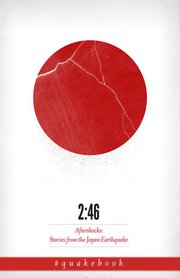 Via a recent article in the Wall Street Journal:
Via a recent article in the Wall Street Journal:
The 2:46 Quakebook Project is “a Twitter-sourced collection of personal accounts of the quake and its aftermath….one group’s response to the disaster initiated by the local blogging community that aims to raise money for relief efforts (the title refers to the time at which the magnitude 9.0 earthquake struck on March 11).”
Note: All proceeds will go to the Japanese Red Cross.
AJET: Guide to Organising Food and Supply Drives
AJET recently put up a good Facebook post on a “Guide to Organising Food and Supply Drives.”
Japan Center for International Exchange (JCIE/USA) Update: 03.28.11
The Japan Center for International Exchange (JCIE/USA) has been an excellent source of updates via the earthquake section of its website as well as its Facebook page. The kind of info you’re likely not getting from CNN or network news. Notably, JET alum James Gannon (Ehime-ken, 1992-94) is the Director of JCIE/USA’s New York office. Here’s the latest update:
Weekend News – http://www.jcie.org/earthquakeupdate.html
- JEN and others report that more relief supplies are reaching those in need, while a recent AMDA survey shows a rise in suspected Influenza cases.
- AAR Japan searched for a senior daycare center by foot in Yamamoto-cho (Miyagi Pref). Only a sign was left and word finally reache…d them that they had lost 3 of their staff members.
Also: JCIE has updated its Timeline through March 25 (http://www.jcie.org/earthquakeupdate.html). Relief supplies, especially medical, are still in high demand two weeks after the ‘Quake & Tsunami. However, NGO’s are also able to reach more and more people in need.
Click here for some images from Recovery & Relief efforts.
Japanese fundraising on the streets of NYC
Ganbare Japan!
Japanese volunteers ask for donations on behalf of the Lions Club in front of Grand Central Station, New York City. Polite yet persistent. Volunteers have been active in this way throughout the city for the last week.
What’s going on in your neck of the woods?
Japan Times: U.S., U.K. teachers stay on to help care for evacuees
This Japan Times article on 3 ALTs who have stayed on to help their towns post earthquake/tsunami appears to be about 3 JETs, though that’s not mentioned specifically in the article.
The English teachers listed are:
- Victor Kochaphum (Iwate, Tanohata)
- Kevin Blake (Iwate, Miyako)
- Paul Dixon (Iwate, Miyako)
Minasan arigatou. Ganbatte kudasai.
Please feel free to share additional stories and examples that you know of in the comments section of this post.
Via a JET alum friend who has a colleague working in Tohoku:
“What is happening here is that among those affected by this disaster, hundreds of small self-help group are emerging in the shelters and elsewhere. This is really the resilience of Japanese people. Every day, TV program report those self-help volunteer group. Victims are helping each other, particularly those young people’s group are doing fantastic activities. However, I’m afraid that the fatigue syndrome will spread sooner or later and it is the time for the role of local NPOs to support those people become very important.”


